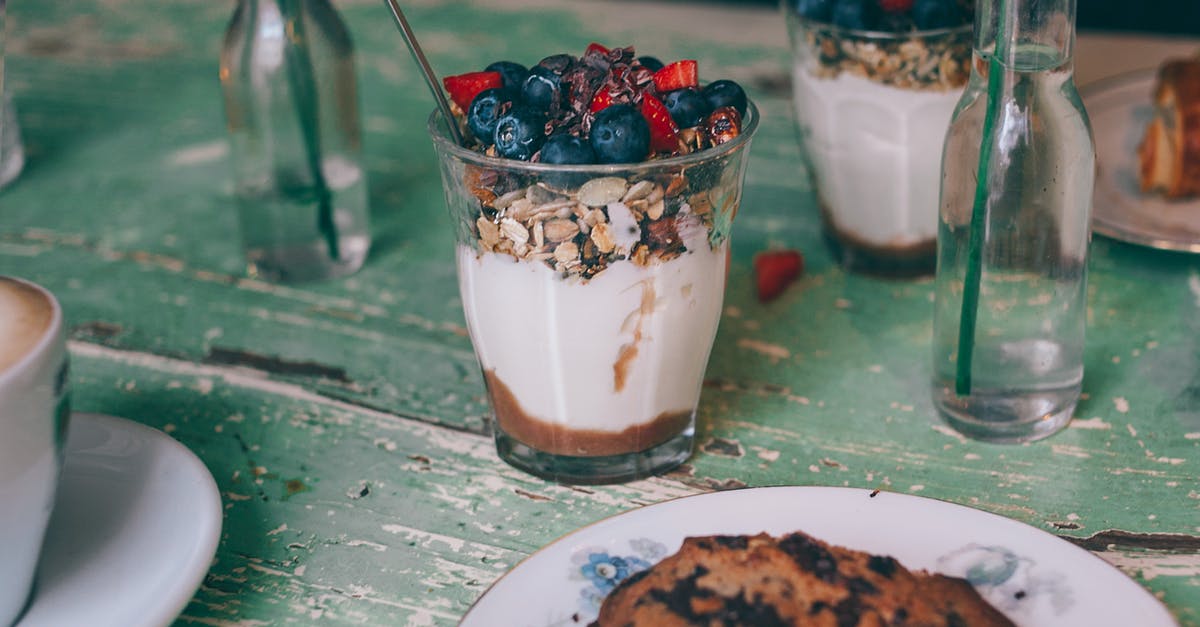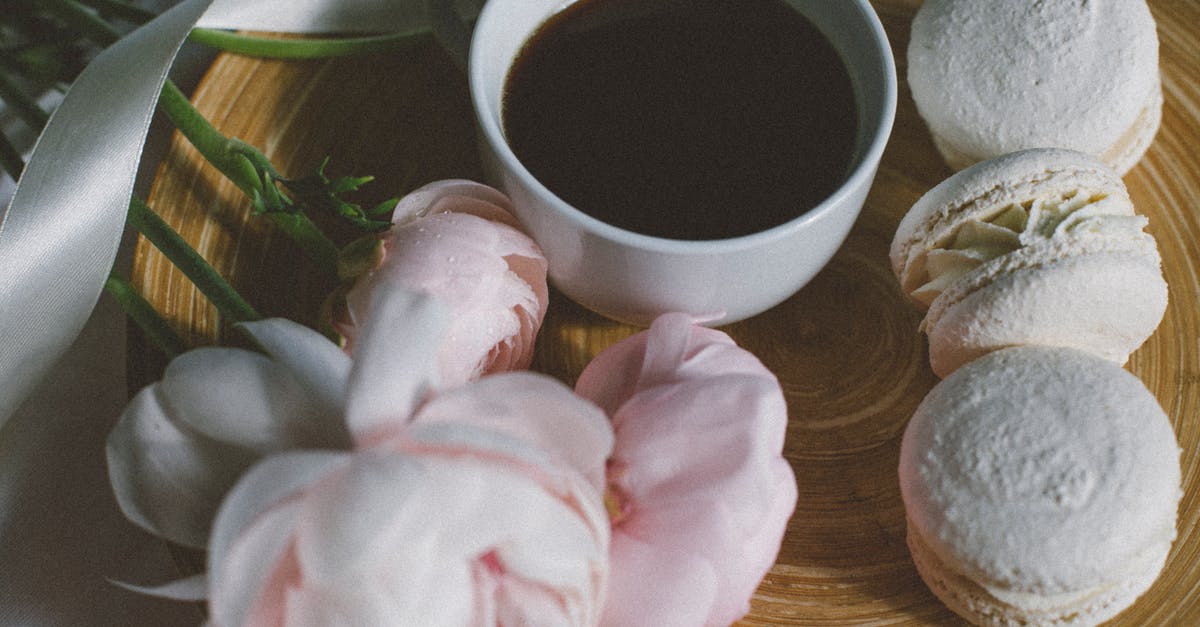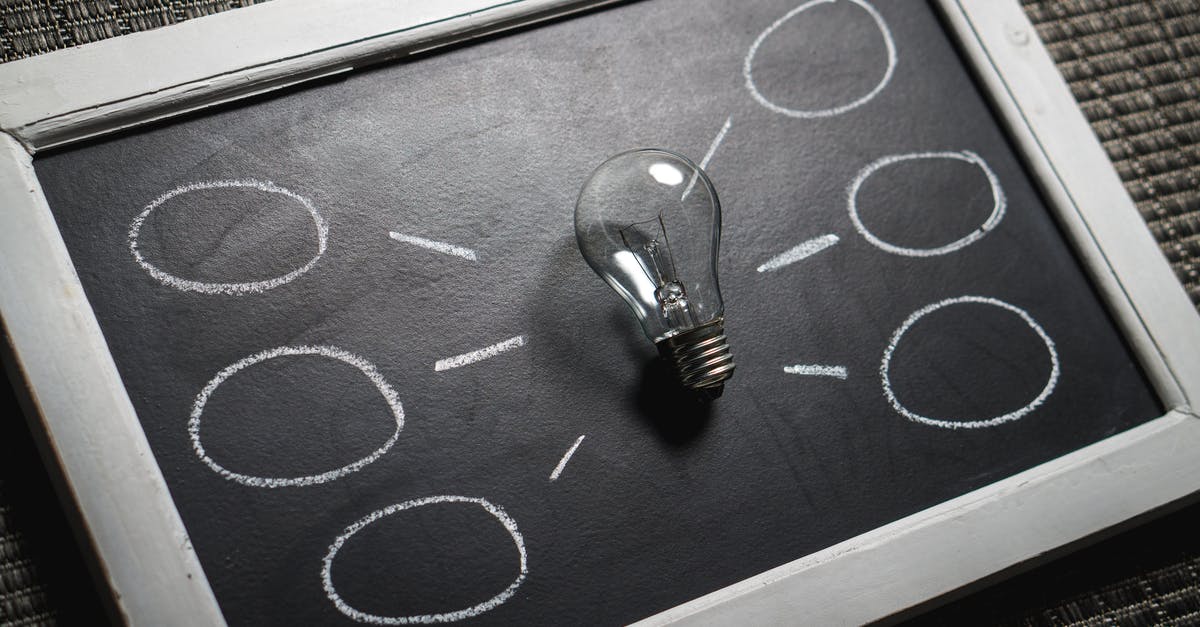Super-saturated sugar solution gone wrong

An interesting recipe here provides this as a recipe for making a geode-looking sugar crystal. The finished product looks really great and is basically this:
- 3 cups sugar
- 1 cup water
food coloring
- Heat water and sugar until sugar is dissolved.
- Cool slightly.
- Pour into foil covered bowl.
- Cover with towels.
- Leave for 48 hrs.
What I always end up with is either no crystallisation or the whole thing turns completely solid.
Is there a secret technique I'm missing?
Best Answer
Creating the Geode candy you have in the link should be relatively straight forward, but does require a little knowledge about how crystals form.
First, let's look at what is probably going wrong by examining your two outcomes:
or the whole thing turns completely solid
You made glass candy. You cooled the solution so quickly that no crystals were allowed to form. Crystallization takes time and complete stillness.
no crystallisation
Lack of crystallization means that either you didn't have enough sugar OR the crystals did not have a surface upon which to grow.
Necessary science: A crystal that forms from a sugar solution is a precipitate, which falls out of solution because there is more solute than solution. A super saturated solution is a solution where there is more solute than solution at nominal temperatures.
We are able to "cheat" the "normal" solution / solute proportions by heating the solution, which allows for more solute to be added to the solution than normally possible. As heat is removed from the solution (yay entropy!), solute is "forced" out of solution because there is just no more room. When this happens, it needs a place to go.
Normally, a precipitate would just solidify and fall to the bottom of the beaker, bowl, or whatever container you're using.
Sugar (as a crystal) could go this route and just fall to the bottom as a coating or mounds of goo at the bottom. OR, if there are structures for it to latch on to, it can start forming crystals.
The interesting thing about crystalline structures is that they whip themselves into molecular order when they run into another crystal. It's like they are walking by the other crystals, and say: "Woah! Nice lattice! Can I join in?" and they just snap into place.
So the hardest crystal to get is the first one.
There are a couple things I would do to improve upon this recipe to get the results you're looking for.
- I would create a sugar solution using mass not volume. 600g of pure sucrose (normal table sugar) in 235g of water would be the minimum concentrate I would use. Honestly, if I could get 1,200g in 235g of water I would do that. But make sure you hit this minimum.
- I would heat up the container as high as I could without causing a malformation. Since the recipe in question is using fondant (and the other, chocolate), that's probably not very feasible. In fact, chocolate is tempered at 105F, and sugar solution is WAY hotter. So, we have an issue there. So, I propose we cheat that a little by creating a layer of glass candy on the bottom (you're good at that already), which will provide a higher level of insulation for the formation of the mixture at the bottom. This also gives us the opportunity to give the crystals something to latch on to in order to grow...
- Your crystals need something they can use to start growing. Fondant is typically pretty smooth, and doesn't really give a great surface for crystals. When you do this experiment using the classic "string hanging in a jar" method, the frayed bits of string provide ample surface area to snag a crystal that is coming out of solution and start the chain reaction that builds large crystals. It's been a while since I did this in physics class, but I believe that the entropy of sugar molecules bouncing off one another is one of the keys to the formation of crystals. It takes a LOT of time to form crystals because we essentially have to wait until two molecules bounce off each other at exactly the right angle to stick to the lattice structure. When you have NO crystals yet, we have to wait for one to get stuck to a structure and provide that lattice base. As your crystal size increases, the growth of the crystals increase because the probability of a sugar molecule colliding with one of the members of the pre-established lattice has increased dramatically, so it happens faster later, but slow to start with. To increase the surface area of your geode, you would need to score the candy glass layer at the bottom of your fondant shell to create groves, bumps, or marks. Anything other than a smooth fondant surface or a smooth candy glass surface will be good. (I realize we are running the risk of just dissolving that off into the solution, which is why you need an truly super saturated solution. If there is no "room" for the sugar to dissolve into the solution, it will not be able to dissolve our little scouring marks either).
- COOL IT SLOWLY. Don't let it cool at room temperature, under a breeze, or on the window sill like it's a pie. Put it in a small cooler so the insulation of the cooler allows heat to escape as slowly as possible. This also means that you should check it as infrequently as possible. A minimum of 5 hours. You could also "make" a cooler by using 4 glass bowls. 2 large and 2 small. Put small bowl #1 on at least 2-3 cloth towels. Put the geode in the bottom of small bowl #1, cover with small bowl #2, and secure them together with tape. Put this "bowl ball" into the bottom of large bowl #1, and cover with large bowl #2, and (again) close with tape. These nested bowls will provide a similarly good insulated environment, which will retard heat transfer. The heat from the sugar solution will fill up the initial area in the two small bowls, which will heat the glass. This will contain water vapor (and probably sugar), which is very effective at transferring heat. Glass, however, sucks at transferring heat. Air is even worse. So, the two small bowls will heat up from the initial insertion of the hot sugar solution, and will heat that environment, but once that reaches a somewhat equillibrium, the heat will not continue to transfer upwards out of the first glass "shell" into the air of the second glass "shell" with any sort of efficiency. So, it should cool very slowly. The second glass shell is (ultimately) cooled by your air conditioner. So, you would want to cover that with a towel as well to prevent convective cooling.
The advantage of using these glass "shells" would be that you can check crystal formation without disturbing the temperature environment OR causing any sort of physical vibrations, which would retard (or destroy) the crystal formation.
PS. Also, based on her accent, I am guessing the cook in the video is in Australia. Since most of the people in Australia live on the coasts, she is probably cooking at or near sea level, with (probably) higher levels of humidity than land locked areas. This probably doesn't affect the amount of sugar she can saturate, but WILL other processes that have to do with water and moisture (just ask bread bakers). You can control for this using an insulated environment created from 4 bowls (two smaller ones nested in two larger ones).
References for more information:
Pictures about "Super-saturated sugar solution gone wrong"



What happens if you stir a supersaturated solution?
Be careful to not stir it or shake it. Remember, a supersaturated solution will look just like an unsaturated solution with no solute settled at the bottom. However, there is more solute than the solvent can actually hold. Any slight change to the solution will cause all of the solute to come out.What will likely happen when you add sugar to a saturated solution?
a saturated solution which can not dissolve any more solubles, addition of more sugar in such a solution will make no change since the solubility potential of water in that solution is at its maximum, therefore the observation that will be made is that soluble sugar crystals will be observed dominating the surface of ...Can you make a supersaturated solution with sugar?
To make a supersaturated solution, make a saturated solution of sugar by adding 360 grams of sugar to 100 mL of water at 80 degrees Celsius. When the water cools back down to 25 degrees, that 360 grams of sugar will still be dissolved even though the water should only dissolve 210 grams of sugar.How do you fix a supersaturated solution?
You can keep stirring in salt, sugar or any other solute, and it will continue to dissolve, even though the saturation point has been reached. Take away the heat and let the solution gradually cool, and the solute will remain dissolved, at least for a time. This is, in essence, the supersaturated definition.Super Saturated Solutions :0
Sources: Stack Exchange - This article follows the attribution requirements of Stack Exchange and is licensed under CC BY-SA 3.0.
Images: Maria Orlova, julia Isaeva, Pixabay, Pixabay
